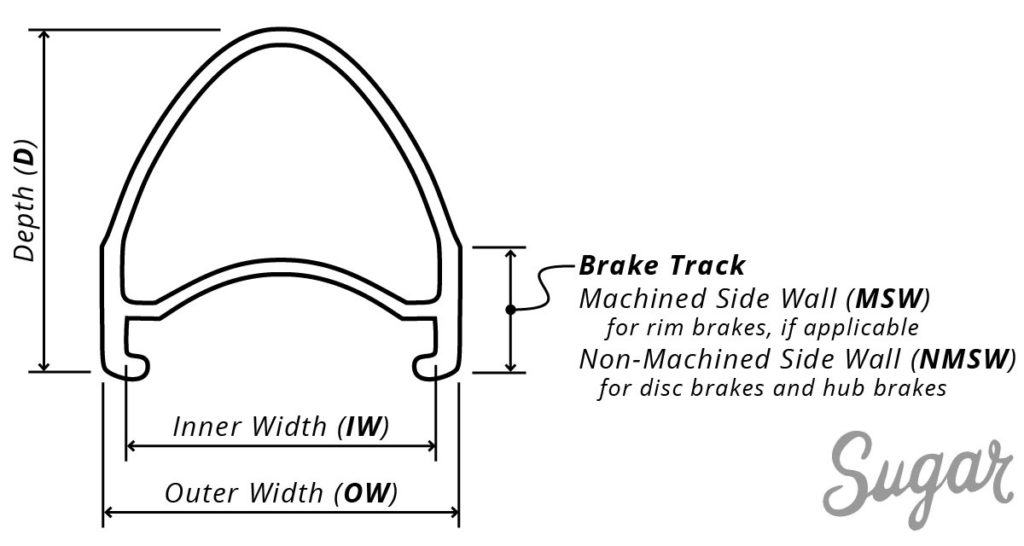There are a lot of factors to consider when choosing a rim.
Some are necessary for compatibility, like whether it’s designed for rim or disc brakes. Other factors are more personal: do you prefer quick acceleration or better aerodynamics? light weight or durability?

Compatibility
Brake Track
Does your brake have rim brakes? Then get a rim with a machined side wall (MSW). If your bike has disc brakes or another type of hub brakes (eg, coaster and roller), then get a non-machined side wall (NMSW). Most MSW rims can also be used for disc and hub brakes, if you’re into that sort of thing.
Inner Width
The inner width of the rim defines the tire compatibility. This is particularly important with narrow tires and wide rims. A good rule of thumb is to always use tires that are at least 1-2mm wider than the inner width of your rim. Most of the rims we sell can accept wide tires, as long as their inflated pressure is kept below the stated maximum.
Outer Width
Today’s wide rims can be too much for some frames. If there’s any question, check your frame’s clearances to be sure your new wheels will fit!
Tubeless
Rims that are not tubeless-compatible must use tubes with tires. Rims that are tubeless-compatible are more versatile: they can use tubes with tires or can use a tubeless setup with (appropriate) tires. If you are interested in tubeless tires, be sure to get a tubeless-compatible rim.
Preference
Material
Carbon fiber or aluminum alloy? Good question!
Today’s carbon rims are quite advanced. Improved mold shapes, layup techniques, brake tracks, and brake pads have made for faster, stronger, lighter, and more stable rims. Today’s rims can take a beating and stay true.
Aluminum alloy rims are also quite advanced. The performance advantages may not reach the level of carbon, but some rims get pretty close.
It’s important to note that carbon rims require brake pads specific to the rim. All carbon rims we sell include two pairs of brake pads and we sell additional pads for all the brands we carry.
Inner Width
A wider inner width creates a more stable, more aerodynamic interface with your tire. We recommend going as wide as you can, without going wider than your narrowest tire.
Depth
A deeper rim tends to be more aerodynamic, heavier, and have a stiffer, harsher ride. This is not always the case, but a good general rule. If you’re looking for a rim to maintain speed, then get a nice deep rim. If, however, you’re stopping/starting through an urban commute, or riding through strong cross winds, then go shallow.
Weight
Perhaps the most coveted spec of them all, the weight it important—though not as important as the internet will lead you to believe. If you’re carrying your bike, stopping/starting, or climbing a lot, then the weight definitely will make a difference. When you’re maintaining speed, though, the weight does not matter as much as aerodynamics. It’s also important to choose a rim that has the structural integrity to match the rider. A more powerful rider will flex an ultralight rim, losing power and fatiguing the wheel in the process. So…. yes, weight matters, but it’s just one factor of many.
